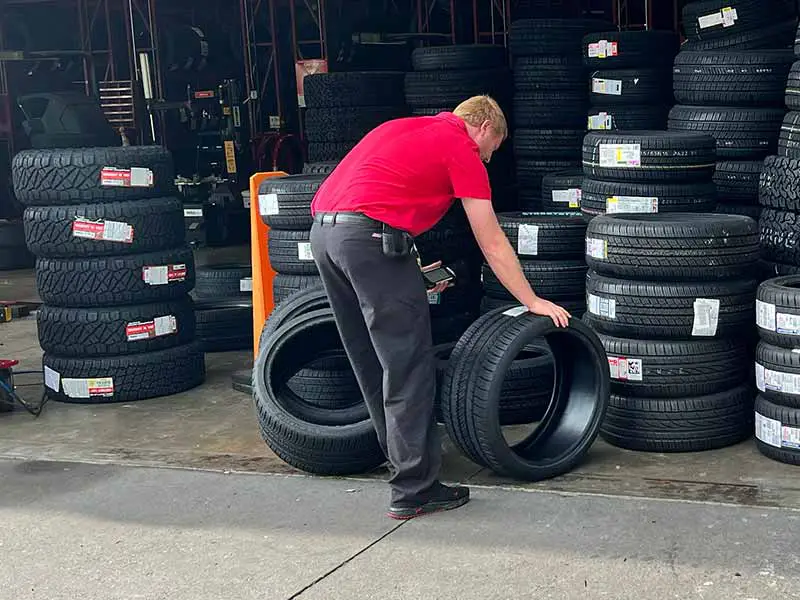The difference between good tires and bad tires isn’t always obvious. Sometimes, what you may mistake for a sign that you need new tires is really a warning sign that you need to fix the underlying cause of the symptom.
Bad tire symptoms may indicate that you’ll need to replace your tires sooner, but sometimes a simple tire repair kit or tire rotation can breathe a little more life into your old tires.
Knowing how to tell if you need new tires requires understanding the causes of the symptoms of bad tires.
6 Symptoms Of Bad Tires
- Low Tread Depth
- Vibrations & Noise
- Tire Cracking
- Sidewall Bulges & Gouges
- Tire Pressure Warnings
- Traction Control & ABS Warnings
Signs of bad tires can be warning signs of a potential tire failure, the fact that you need new tires, or that maybe you need to switch to snow tires due to the harsh weather and icy conditions.
We’ll cover each symptom in detail so that you can get a clear understanding of the root causes and whether you simply need new tires or have a more serious issue.
Let’s take a closer look.
Low Tread Depth
Tires don’t last forever unfortunately. Eventually, even a perfectly maintained tire that has had no problems will need to be replaced. As tire tread wears down it loses performance gradually. Once tire tread depth has reached 4/32″ it will have lost enough performance that we recommend replacing your tires.
The legal limit for your tires tread depth in most states is 2/32″ so you aren’t required to replace your tires at 4/32″, but the stopping distance on wet roads and lack of hydroplaning resistance that occurs below 4/32″ of tread depth isn’t worth the slight savings you may get from continuing to drive on worn out tires.
You should check the depth of the tread on your tires regularly to know when they are in need of being replaced. A tread depth gauge is the best tool for this job, but the penny test or reading the wear bars can also tell you if it’s time for new tires.
Wet Weather Traction
As the grooves in your tread pattern become shallower due to the tread blocks wear down over time, they lose their ability to maintain traction on wet roads and rainy conditions.
Tread grooves channel water out from underneath the contact patch of your tires to allow them to maintain contact with the pavement. Worn out tires will have a much more difficult time trying to grip the road in the rain than those with tread depth that is closer to new tires than bald tires.
Hydroplaning Resistance
Hydroplaning is a dangerous situation that occurs much more easily with bad tires than new tires. It’s when your tires encounter a standing water or medium to heavy rain that can cause a enough water to remain on the road to overwhelm your tire tread.
When the volume of water your tire tread needs to channel out from underneath their contact patch is too great, the tires will lose contact with the road surface and glide across the water’s surface similar to a skim boarder at the beach.
When this happens you lose the ability to brake and steer, which if you’ve ever experienced it, is a terrifying and helpless feeling.
Stopping Distance
The ability of your tires to bring you to a complete stop in rainy weather depends a lot on their tread depth. The difference in stopping distance during moderately rainy conditions can double between new tires and bald tires with 2/32″ of tread depth or less.
This is a massive difference in stopping distance and can easily be the difference between you skidding into the vehicles in front of your or stopping with plenty of room to spare.
Vibrations & Noise
Excessive noise and vibration coming from your tires can be a warning sign of several different underlying problems. It’s important to understand the cause of these noises and vibrations since some can be relatively insignificant while others can be a clue to a dangerous situation developing.
Uneven Tread Wear
Probably the most common cause of steering wheel vibration and excessive road noise is uneven tread wear. The causes of poor tread wear vary quite a bit however.
Some common causes of uneven tread wear are:
- Improper Tire Inflation Pressures
- Bad Alignment
- Worn Suspension Components
- Bent Wheels And Balance Problems
- Driving Style
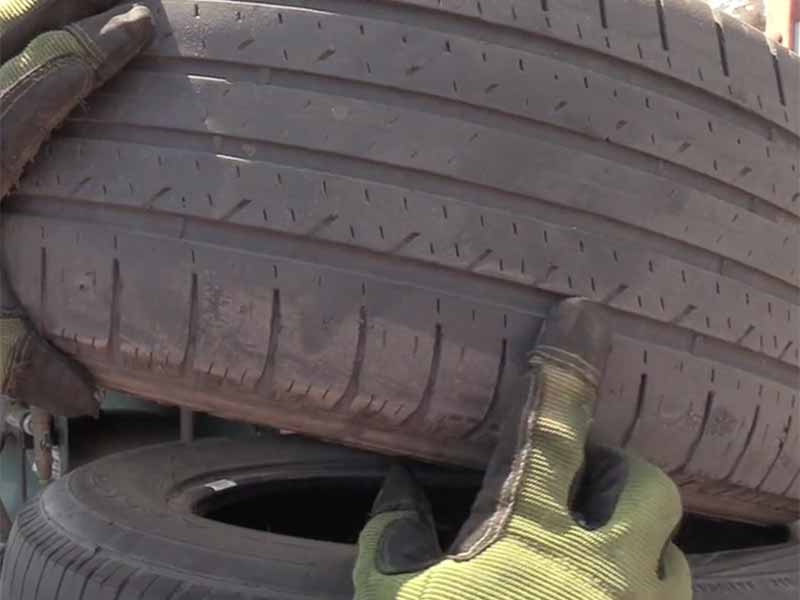
Foreign Object Puncture
It’s very common for a nail or screw to puncture your tire but not leak much air since they usually stay stuck in the tire tread. Often, these foreign objects will make noise as you’re driving.
This is especially true of larger objects that get embedded into your tires. I’ve seen some very surprising things puncture a tire and manage to stay in there without allowing air pressure to drop enough to trigger your tire pressure monitoring system.
A visual inspection of your tires should be able to identify any signs of punctures that are severe enough to cause noise or vibrations that you can feel through the steering wheel or seat.
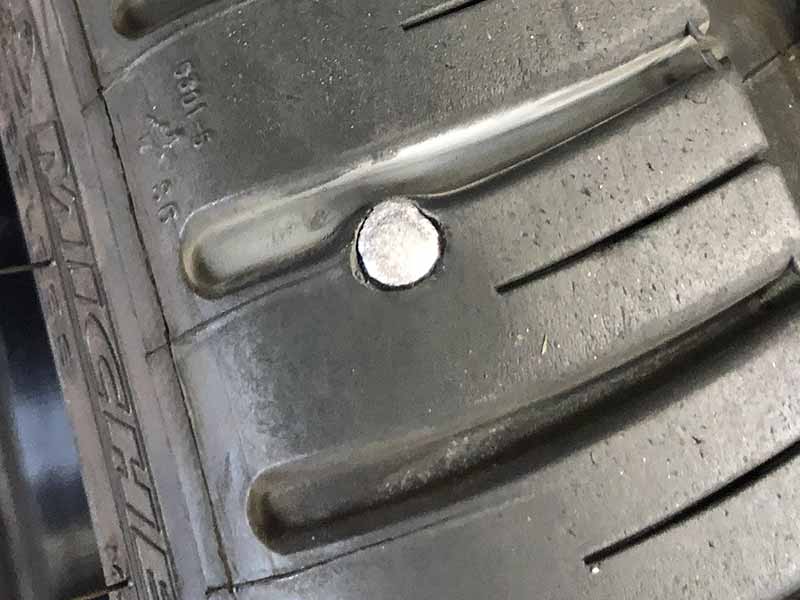
Tire Balance Issues
All new tires need to be balanced when they are first mounted, but your tires can fall out of balance over time. As the rubber wears down or wear and tear causes slight bends to your wheels or even structural damage to your tires, you may feel vibrations that rise and fall with the speed of your car or truck.
Curb strikes and potholes can be serious enough to bend a wheel or snap a belt in the structure of your tire. Even smaller strikes over time can build up and do damage eventually that causes balance problems or causes your tire to lose its round shape.
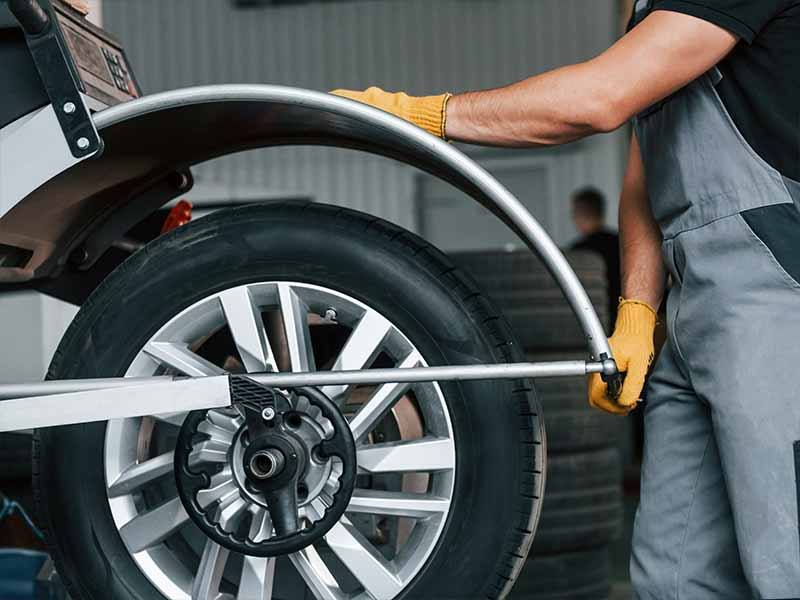
Tire Cracking
As your tire’s age tire failure can occur from dry rot. Most tires will last for approximately six years whether they have become bald tires or not.
Sidewall cracks and cracks in tread grooves are common signs that dry rot has become a serious problem and your tires may need to be replaced due to age.
Older tires will begin to develop these cracks and eventually the tire will fail. The result may simply be walking out to your car or truck one day and finding a flat tire. Or you may suffer a catastrophic blowout while driving down the highway and lose control.
The recommended way to deal with cracked sidewalls and tread grooves is to replace your tires every six years regardless of the condition of your tire tread. Good tires should last at least six years without worry of damage due to exposure to UV rays and ozone.
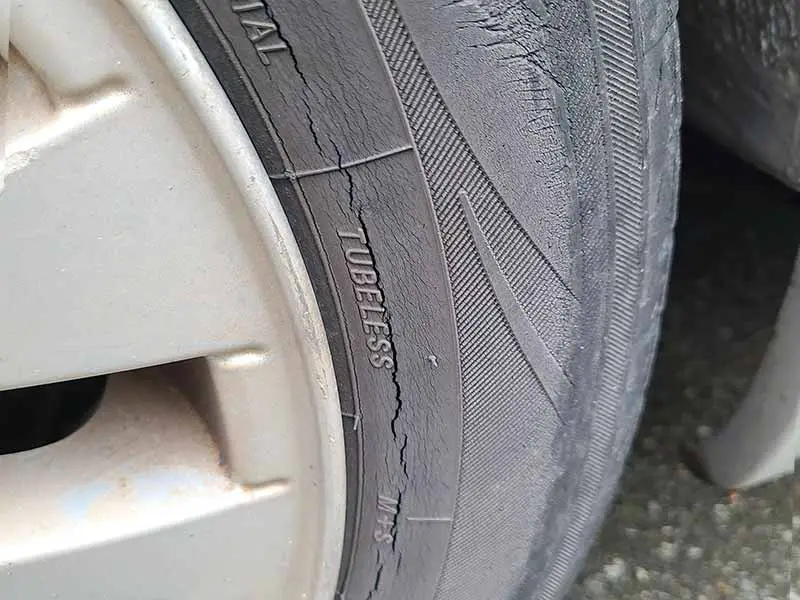
Sidewall Bulges & Gouges
Sidewalls on your tires take a lot of abuse. They’re constantly flexing as you drive down the road and they absorb a lot of hits from poorly paved roads and curbs. If the damage becomes too great they can cause your tires to lose their shape or make it difficult for your tires to maintain proper air pressure.
Bulges in the sidewalls of your tires are the most obvious sign that a steel belt has broken within your tire and it needs to be replaced as soon as possible. These bulges can explode due to the extreme pressure within your tires. While you may only end up with a flat tire in some cases, you could experience a catastrophic blowout at highway speeds that can lead to a serious accident.
Deep gouges that expose belts and threads within the structure of your tires are a warning that this spot on your tire will be failing soon. When the inner structure of your tire is exposed to harsh weather, ultraviolet rays from the sun, and the regular wear and tear of daily driving, you can expect to need to replace your tire with a new one soon.
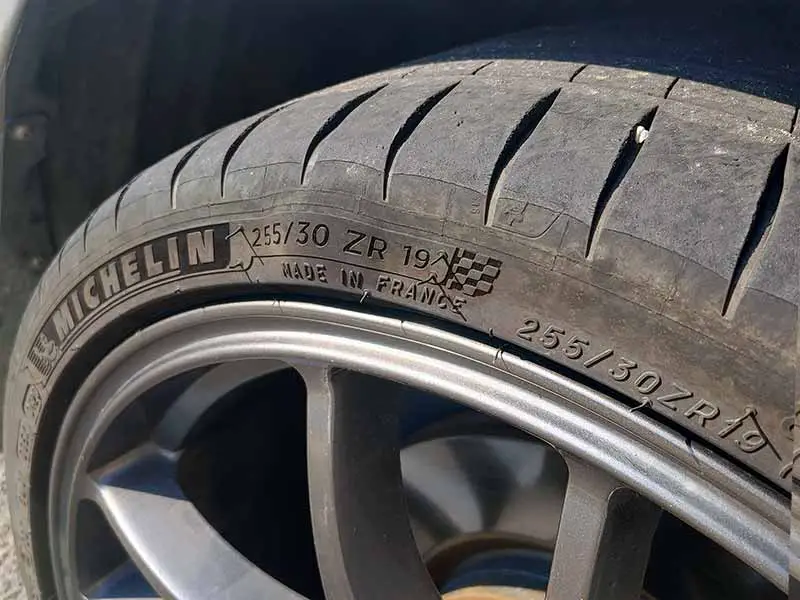
Tire Pressure Warnings
Today’s cars come with tire pressure monitoring systems installed as required safety equipment. They do a good job of letting drivers know when we have low tire pressure and need to top them back up.
Seasonal drops in pressure that trigger these TPMS warnings are normal. As temperatures in fall become cooler, the air in your tires becomes more dense and the pressure drops. As summer rolls around, the air in your tires heats back up and can account for a small bit of pressure loss that may have occurred over the winter months.
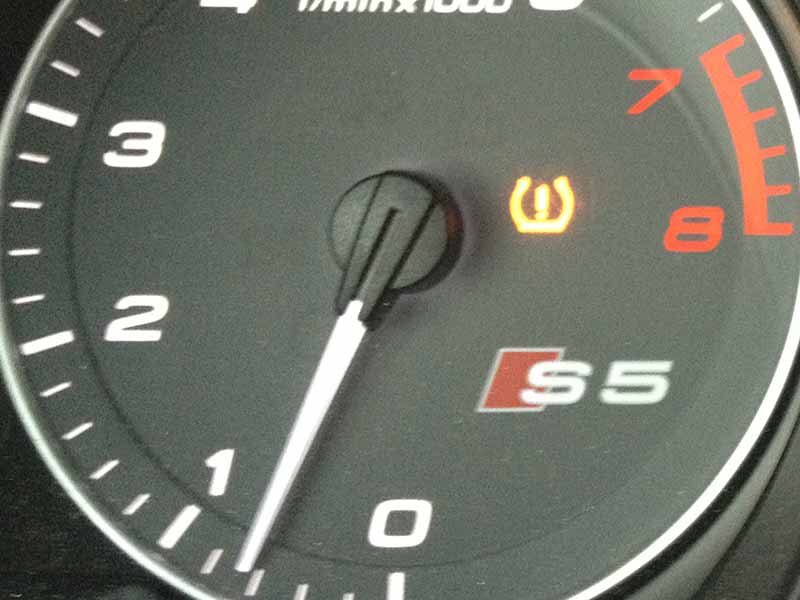
Eventually, all tires will lose enough air to require being topped up again. If you don’t stay on top of this your tires tread wears on the shoulders of the tread pattern. TPMS only alerts when tire pressure drops by 25% or more. This is why you should regularly check your tire pressures yourself.
Overinflation is also a cause of uneven tread wear. Tires with too much air in them will balloon outward in the middle of the tread pattern and cause the center of the tread to wear out before the shoulders.
I recommend picking up a good quality portable air compressor and using it to top up your tires monthly. Doing this will prevent uneven wear caused by incorrect tire pressure and ensure your tires grip the road properly.
Traction Control & ABS Warnings
Electronic stability control systems are designed to help us maintain control of your vehicles when we push them beyond their limits. If those limits begin to drop rapidly due to driving on bad tires, these systems will be triggered more frequently.
While a traction control light or anti-lock braking system light on your dashboard isn’t necessarily a warning that you don’t have good tires, it is worth keeping in mind that more frequently triggering these systems is caused by something. Whether it’s aggressive driving, usually poor weather, or you simply need new tires.
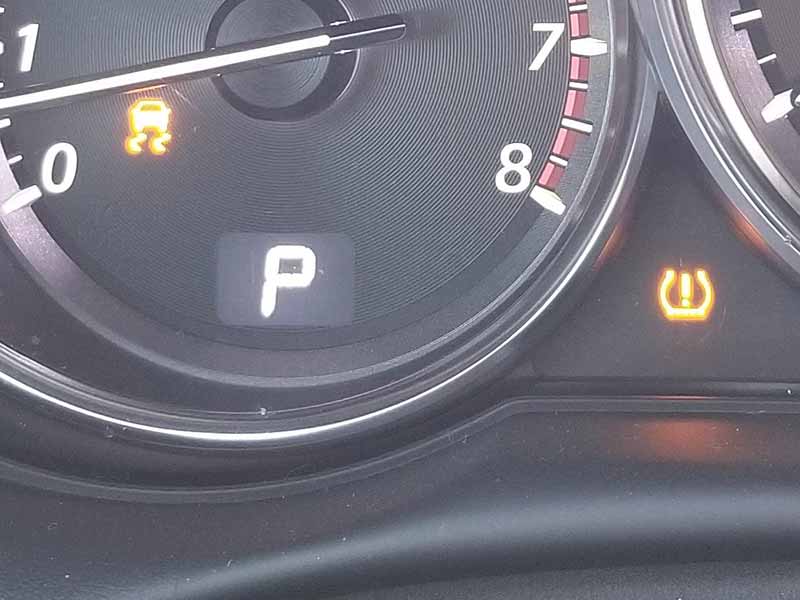
Resources
Below are some links you may find helpful when learning about tires
- Beware these early warning signs of tire failure – Consumer Reports
- Signs of bad tires – It Still Runs
Final Thoughts
Good tires and bad tires can sometimes produce the same symptoms. You don’t always need new tires if your experiencing one of these warning signs. You may need to address the underlying problem first.
Uneven wear patterns, low tire pressure, or too much vibration can all be signs that you may need new tires. But bad tires aren’t always the cause. Sometimes you need to fix the problem that caused your tires to get into bad shape first.
If you don’t fix the cause of the problem, buying new tires could be a waste of money.
Good luck and happy motoring.
